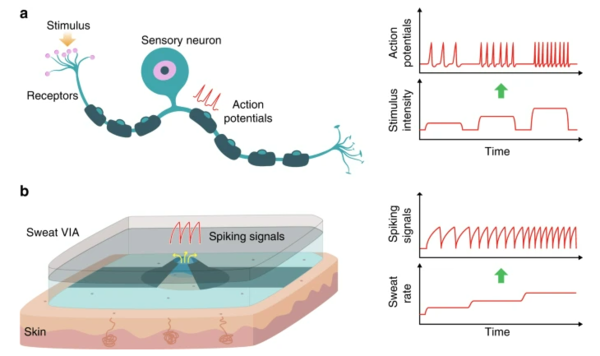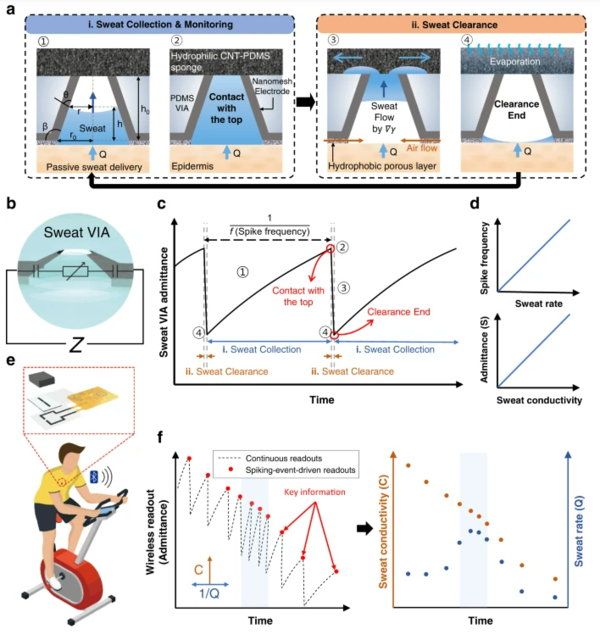The Korean Institute of Science and Technology (KIST) said on Wednesday that its researchers developed an electronic sweat sensor for event-driven, energy-efficient, long-term wireless monitoring of epidermal perspiration dynamics in a recently published study.

Human sweat contains blood metabolites, ion concentrations, and nutrients. Those elements can be monitored through wearable sensors to check health conditions non-invasively, without the need for blood collection.
For example, sweat’s ion concentration can help individuals better manage their hydration and sodium levels during physical activity, and prevent hypoglycemic shock.
However, current wearable sweat sensors generate a large amount of redundant data due to continuous data transmission which consumes significant energy, making it impractical for long-term applications.
Accordingly, the research team developed a wireless wearable sweat sensor patch that mimics sensory neurons when they receive external stimuli and convert them into spikes to exchange information with motor neurons. The greater the intensity of the stimulus, the faster the spike signal is produced. This event-based spike signal processing method of neurons enables efficient, fast, and accurate processing of complex external stimulation data.

The sweat sensor is equipped with a pair of electrodes on the inner wall of the channel so that sweat can be converted into an electrical signal.
The speed at which sweat is discharged and the concentration of sweat ion components are measured through the frequency and amplitude of the spike signal in various skin areas in actual exercise situations.
Additionally, the sweat sensor can be operated continuously for more than 24 hours, quickly clearing the sweat for accurate real-time monitoring. They also demonstrated that the event-based data transmission method uses only 0.63 percent of the energy required for continuous data transmission.
“These findings enable long-term sweat monitoring to detect acute diseases such as nightly hypoglycemic shock and heart attacks, or their precursor symptoms,” said the research team. “It is also expected that more energy-efficient and intelligent digital health care will be possible when combined with other wearable skin sensors and computing technologies.”
The study, titled, "An epifluidic electronic patch with spiking sweat clearance for event-driven perspiration monitoring," was published in the international journal, Nature Communications.

